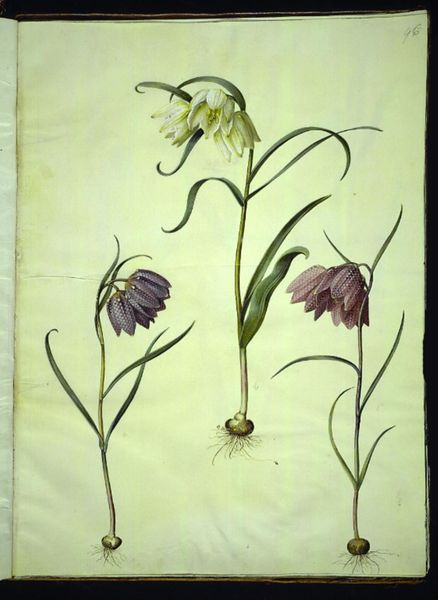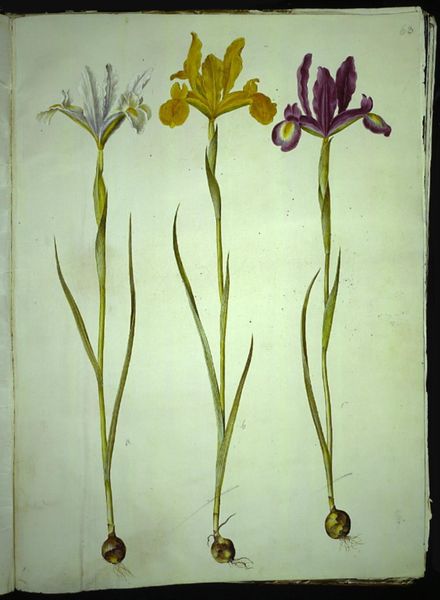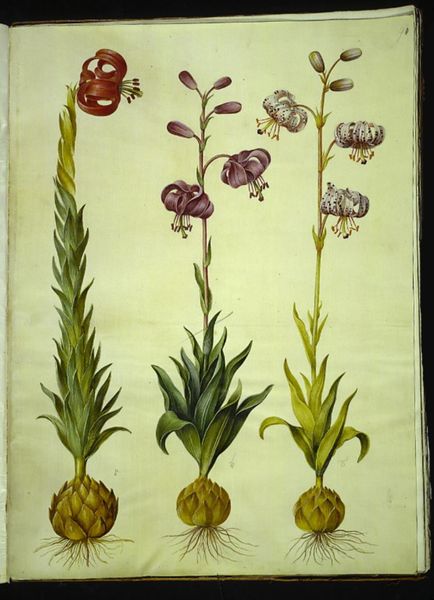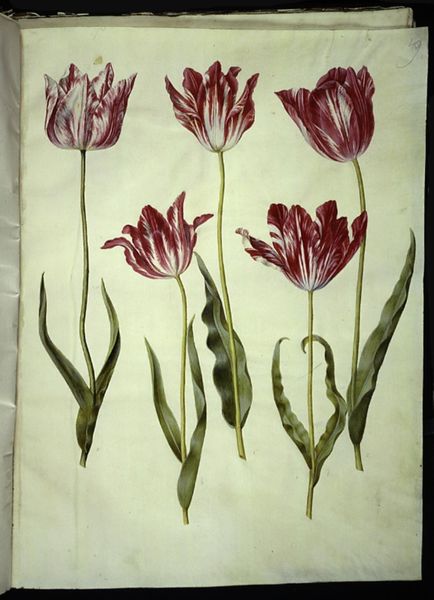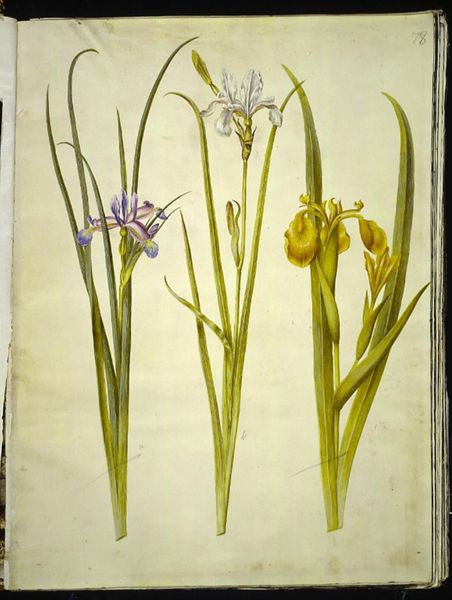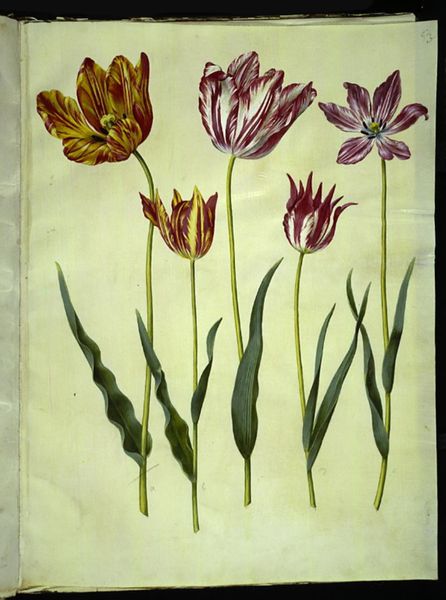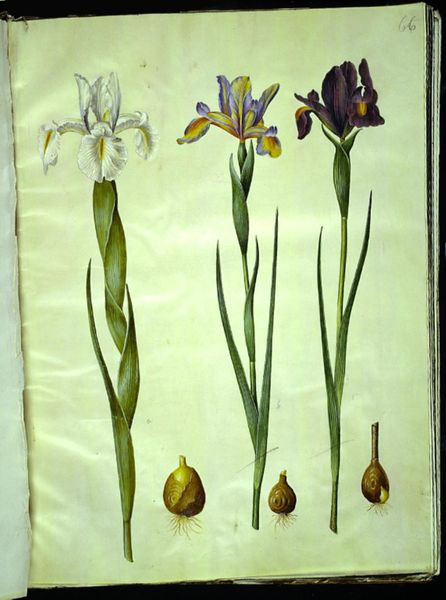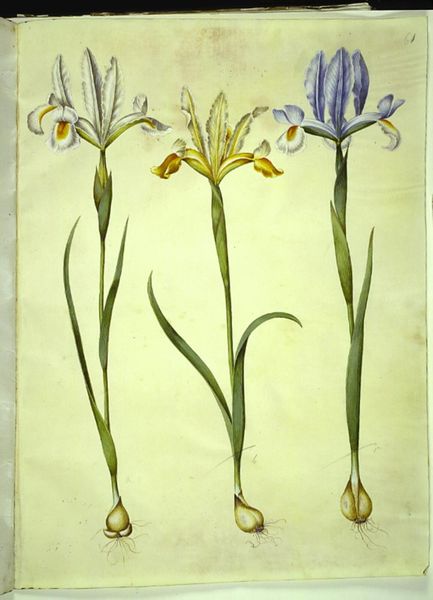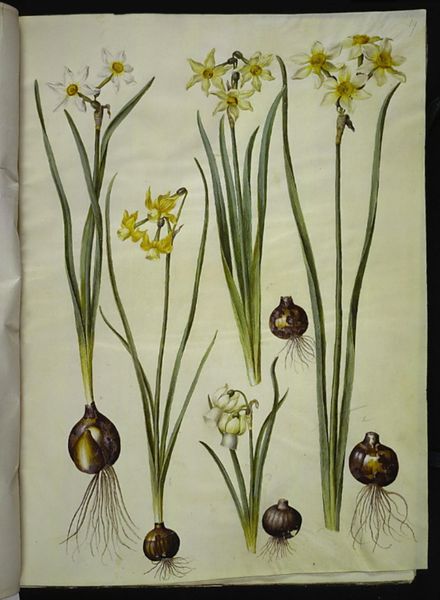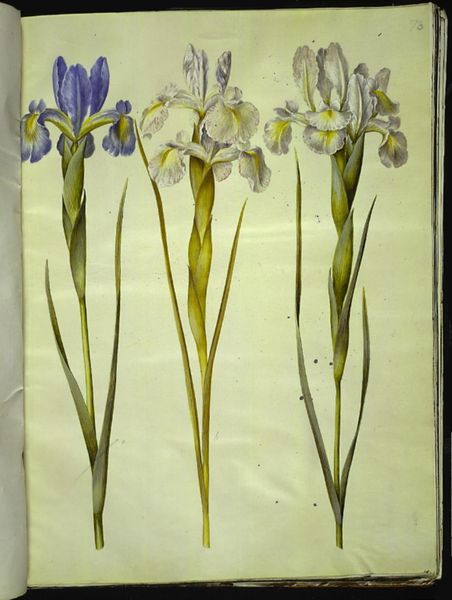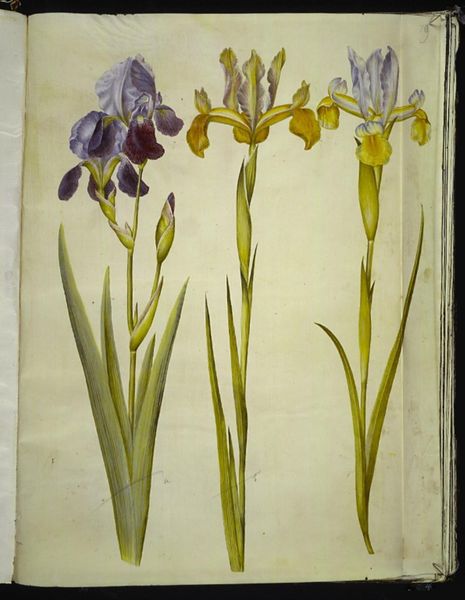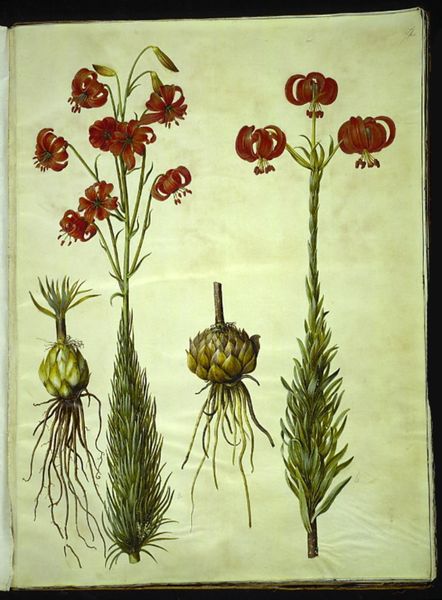
Fritillaria meleagris (almindelig vibeæg) 1649 - 1659
0:00
0:00
drawing, gouache, watercolor
#
drawing
#
water colours
#
dutch-golden-age
#
gouache
#
watercolor
#
watercolour illustration
#
botanical art
Dimensions: 505 mm (height) x 385 mm (width) (bladmaal)
Curator: Welcome. We’re looking at Hans Simon Holtzbecker's “Fritillaria meleagris (almindelig vibeæg),” created sometime between 1649 and 1659. It’s a watercolor, gouache, and drawing piece. Editor: My first impression? The composition, with its starkly vertical stems and the almost mournful drooping of the flower heads, creates a quiet, introspective mood. The checkered pattern is surprisingly arresting. Curator: The precision of line and delicate rendering of color demonstrate Holtzbecker's mastery of the watercolor medium. Notice how each stem, leaf, and bulb is meticulously captured. It reveals a fascination with botanical accuracy and compositional structure. Editor: It's more than just scientific illustration, though, isn’t it? In the 17th century, these meticulous floral studies weren't solely about objective observation. Think of the tulip mania, and the broader commercial obsession of botany—who was allowed access and how did wealth affect what you saw or acquired? Curator: Precisely! And consider how this single plate would have functioned within a larger codex. The seriality itself, the repeated visual encounter with this singular bloom, shifts our understanding of its meaning and its materiality. Editor: Holtzbecker worked in a context profoundly shaped by trade and access to nature, influencing everything from scientific understanding to its place in our lived social conditions. Who commissioned works like this and why? Curator: The balance achieved between objective description and aesthetic refinement gives the piece a timeless quality. Holtzbecker has used formal qualities to move this piece beyond simple documentation into artistry. Editor: Indeed, what begins as observation quickly becomes a record of not just natural life, but one shaped through specific social practices, wealth, and historical events of Holtzbecker's time. This gives us an invitation to explore historical tensions present between power and display, scientific pursuits and material collection.
Comments
No comments
Be the first to comment and join the conversation on the ultimate creative platform.

